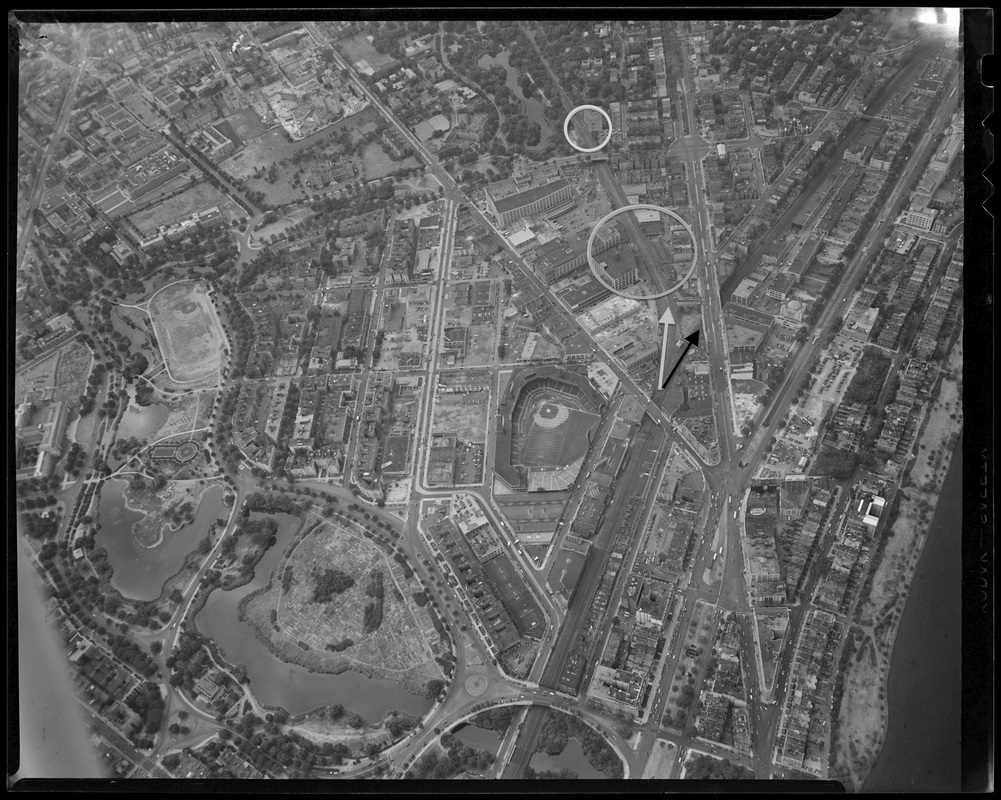it's pretty clear at this point, the developer has changed his strategy; and will attempt to do the easy $$$ part of the project, and then walk.
Rosenthal's project will add a few apartments and fill in a hole. The state should only get involved if the project will really make an impact...
Fenway Center is wayyy more than that.
There’s no middle ground above the Pike
https://www.bostonglobe.com/opinion...seeing-pike/8fjCujnh3RR36uBJ8DumiP/story.html
The SPAN of the Massachusetts Turnpike between Brookline Avenue and Beacon Street is nothing right now. It’s a windswept bit of emptiness. It should be the type of place where Boston builds its future. But right now, that future is a shaky one.
Developer John Rosenthal wants to build shops, offices, and hundreds of apartments atop the Turnpike behind Kenmore Square. Rosenthal has been pushing his half-billion-dollar Fenway Center development ahead for years. The project is now at a precipice. Rosenthal says Fenway Center’s future hinges on a city property tax break.
Fenway Center could start construction in the fall and wind up looking like Copley Place or the Prudential Center, two wildly successful developments built atop the Pike. Or it could end up looking like the stretch of Turnpike where Columbus Center was supposed to rise. There, the Pike stretches east from Clarendon Street for acres, a chasm that scatters pedestrians and cleaves neighborhoods. It looks the same today as it has for decades. Columbus Center tried to breathe some life into a corner of town that has no business being empty and forlorn, but it failed, and now, it’ll likely be years before the next shot at bridging the Turnpike at this spot comes along.
These are the stakes Rosenthal is facing in the Fenway. When projects like Rosenthal’s succeed, they’re home runs, but when they fall, they tend to stay down. When building on air in Boston, there’s no middle ground. The difference between the two at Fenway Center is less than $10 million.
It shouldn’t have come to this. Rosenthal’s project was ready to go when it got its development permits four years ago, but a nasty, protracted lawsuit by a neighbor set it back years. By the time Fenway Center emerged from the courthouse, its construction costs had soared by $50 million. Redesign work has eliminated most of that overrun, but Rosenthal is still faced with a $7.8 million gap.
The $7.8 million figure happens to be the size of the tax breaks former Boston Mayor Tom Menino handed to mega-developments at North Station and Filene’s last year. Rosenthal sought the same deal, and was stonewalled. He’s hoping for better luck with the new mayor, Marty Walsh. And he’s describing this as a “do or die” moment for Fenway Center.
The late Boston Mayor Kevin White and Governor Ed King sat in office the last time Boston successfully started a development project above the Pike. The projects that tried to follow Copley Place and the Pru have failed spectacularly. Millennium Partners, now building the Filene’s tower, instigated a heated battle between Menino, Back Bay residents, and the Turnpike Authority when it tried building a 59-story tower above the corner of Boylston Street and Massachusetts Avenue. Columbus Center imploded, and left a campaign finance scandal in its wake.
Rosenthal hates comparisons between his project and Columbus Center. There are some key differences between the two: The road and rail network running underneath the Fenway Center construction site is less complex than the one underneath Columbus Center’s site, and Rosenthal’s site has far more land to build on, making his deck smaller and much less expensive than the one Columbus Center required.
Columbus Center’s unwieldy size — it would have spanned 2.5 more acres than Fenway Center, and cost hundreds of millions of dollars more, but would have contained the same square footage — also led to its swift unraveling.
For all their differences, though, Rosenthal’s project has much more in common with the Turnpike developments that preceded it than with Fenway Center’s neighbors.
Scores of apartments and shops are now rising around the corner from Rosenthal’s development site; they’ll all start with a hole in the ground and a foundation, like any conventional construction project. Rosenthal’s starts with a deck above the Pike, and his buildings rest on this deck. It adds roughly $35 million to Fenway Center’s upfront price tag.
This is why developments above the Pike fail so regularly: They cost more to build, and are harder to finance. Rosenthal insists a property tax break would reduce his costs for long enough to get the first Pike development in a generation up and running. If he falls short, Fenway residents had better get used to looking at the highway, because it’s going to be there for a while.



